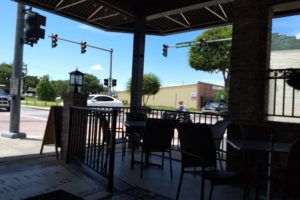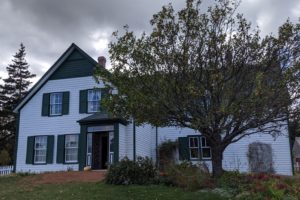Have you ever heard about the Civil War battle at Fort Fisher outside of Wilmington, NC? We hadn’t either. What we did learn when we visited here was that this significant battle determined the end of the Civil War. Let’s look first at what happened here before this battle on Christmas Eve 1864 and January 1854: the role of blockade runners (like Rhett Butler in Gone With the Wind), day-to-day life for the soldiers, and building of the fort out of sand.

1860 – the port of Wilmington
Nearly 10,000 people lived in Wilmington in 1860 and was the largest city in North Carolina at this time of the war.

1861 – the plan to sever the Confederate supply line
A successful military campaign depends on a successful supply line.

blockade-runners
This blockade order came just 4 days after the firing on Fort Sumter in April 1861 (we’ll see this fort when we go to Charleston). North Carolina seceded from the U.S. a month later. The first blockade ship, the Roanoke, attempted to blockade Wilmington when it appeared off the coast of southeastern NC.

“King Cotton” was the major item the South offered in trade to the outside world. High profits and necessity encouraged blockade-runners to enter Confederate ports with manufactured goods and exiting with cotton.


These vessels were painted light gray and used smokeless coal when available. Sometimes the smokestacks were collapsible to lower their silhouette on the horizon. Creative captains covered paddle-wheels with fabric to lessen noise. While expensive to build, blockade-runners could often pay for themselves with one successful round trip. Profits were enormous and seldom fell below 100%.
1864 blockade-runners
The Condor was one of the few triple-stacked blockade runner.


From a dive site website, here’s more information about the Condor wreck. “She drowned in the surf, allegedly with gold meant for the Confederacy. The rest of the crew rowed safely to shore the following day. Today, Condor rests in 25 shallow feet of water, roughly 700 yards off the beach in front of the North Carolina Aquarium at Fort Fisher.” (We’ll see how close Fort Fisher is to the aquarium in the last picture of the next post.)
During the last 6 months of 1864, before the battle at Fort Fisher, Charleston and Wilmington imported almost everything that they needed. Included were 500,000 pairs of shoes, 300,000 blankets, 50,000 rifles, 3.5 million pounds of meat, 1.5 million pounds of lead, 43 cannons, and innumerable other supplies (much of these items came from Great Britain).

geography – key to the Cape Fear defense system
The southern end of New Hanover County was perfect for blockade-running because of the 2 entrances that served the Cape Fear River. The natural mouth of the river, Old Inlet, emptied into the Atlantic Ocean near what’s now Southport. New Inlet opened into the ocean about 5 miles above the river’s mouth. Between these 2 inlets were several small islands, spits of sand, and salt marshes. Additionally, Frying Pan Shoals, a shallow group of constantly shifting sandbars, extended from the tip of Bald Head Island (today’s name) at the river’s mouth 20 miles into the Atlantic. These conditions created a large area to try to block.



blockade-runner cargo auctions
Inflation had some shoppers say that it took a “wheel barrow full of money in order to purchase a pocketbook full of groceries.” Speculation in luxuries, combined with shortages of necessities, led to government regulations on blockade-running. In February 1864, the Confederate Congress moved to ban the importation of luxury items while reserving 1/2 of all cargo space on the runners for the Confederate government.

One blockade-runner described a speculative venture where he purchased 1000 pairs of corset stays and a large supply of toothbrushes in Scotland. Later he sold the stays for $.12, each earning 1100% profit on the venture. He sent the toothbrushes to Richmond where they sold for 7x their cost.
1862-1864 – building Fort Fisher out of sand
Forts built before the Civil War were built with brick and masonry in a classic medieval fortress manner. As we’ve seen in posts on other trips, that practice proved worthless because solid-shot cannonballs were replaced by rifled cannons with exploding shells. Masonry forts simply disintegrated under this type of fire. (More about this in our 2021 trip to Mobile Bay and saw the siege of Fort Morgan.)
Fort Fisher, however, was made almost entirely of sand that absorbed the blast and shock of the huge 100-pound shells. Soldiers inside the mounds (that we’ll see soon) waited out the bombardments in the safety of casemates constructed of logs and sometimes railroad iron.

In other parts of the South, the Confederates built their forts with whatever they had to make forts that could take the pressure of the newer artillery. On one of our quick trips in 2021, we saw Fort Blakeley on Mobile Bay that’s a “fort” made out of dirt.
Col. Lamb had the determination and perseverance to complete the work done on Fort Fisher despite setbacks and harsh conditions. When he came on July 4, 1862, he said he wanted “to build a work of such magnitude that it could withstand the heaviest fire of any guns of the American Navy.”

When the time came to defend their position, an impressive work stood at Confederate Point.

- average height of the guns was 20 feet
- 12 more feet of dirt topped off each mount for protection between gun crews
- land face in front was cleared of trees and brush to give defenders an open range of 1 full mile
- under the fort’s earthen mound near the middle of the land face was a tunnel called a sally port where defenders could roll out field-pieces and fire canister into troops advancing across the treeless beaches
- fort’s sea and land faces formed an “L” that joined at the corner known as the northeast bastion.
- sea face had 8 batteries connected by a ridge of sand that mounted 22 large guns




guns of Fort Fisher
A real hodgepodge of artillery defended Fort Fisher. Of the 44 big guns, half were old muzzle-loading smoothbores that couldn’t match the accuracy of newer rifled artillery. The Confederates modified many of these smoothbores into rifled and banded guns that brought more accuracy and reinforced the barrel. Foreign governments provided other guns, and some rifles were salvage from blockade-runners.

During the 2nd battle of Fort Fisher In January 1865, the Confederates had about 2000 rounds of ammunition, while just 1 of the 58 warships that attacked the fort (the USS Malvery) had more than 3000 projectiles in its magazines.


Because of increased internal pressure, a band of iron or semi-steel was fitted over the back end of the gun to reinforce the breech.

They defended the center and River Road sally ports . . .

. . . and caused more Federal casualties than the 20 big guns on the land face.
The 12-pounder cannon weighed 2000 pounds and had a smoothbore barrel. Crewed by 8 men and pulled by 4 to 6 horses, it had a range of 1600 yards and a firing rate of twice per minute.

The gun was destroyed on the morning of January 16, 1865, when the fort’s main magazine accidentally blew up.


life at Fort Fisher before the battles
The common soldiers spent their days digging the tons of sand to build the fort, chopping trees for palisades, cleaning and mounting heavy guns–all while hoping to get a decent meal.

Common pastimes to kill some time included:
- playing cards, shooting marbles, and fishing
- attending services by the chaplain
- music and dancing (partners?)
- while whiskey and other liquors were forbidden inside the fort, drinking always happens; when a beached blockade-runner provided a windfall of spirits, an alcoholic frenzy stole the moment
- trips to Wilmington took soldiers to lively bars and prostitutes
- letters home showed how nerves were numbed under the continual strain of the pressure of war
Rations issued to the Fort Fisher garrison tended to be plain and monotonous. The lack of available vegetables to offset this bland diet led to an outbreak of scurvy at all the forts in the Cape Fear District in late 1862 and early 1863.


This large garden was probably located 300 yards north of the fort’s land face and was overseen by the post’s surgeon and worked by one soldier assigned from each company in the fort. Both the company gardens and the later post garden had a variety of vegetables.

Now we’ve set the stage for the battles at Fort Fisher. Next we’ll look at what happens.




